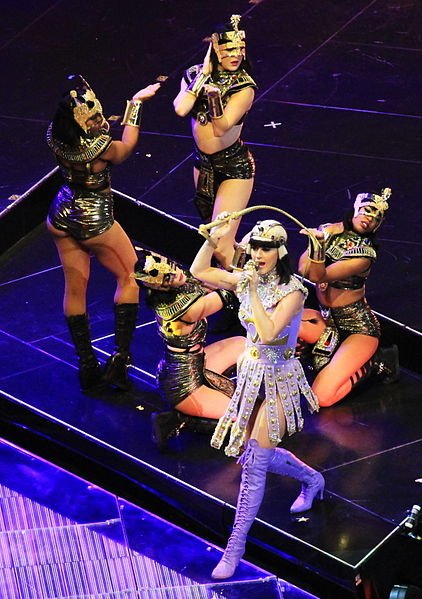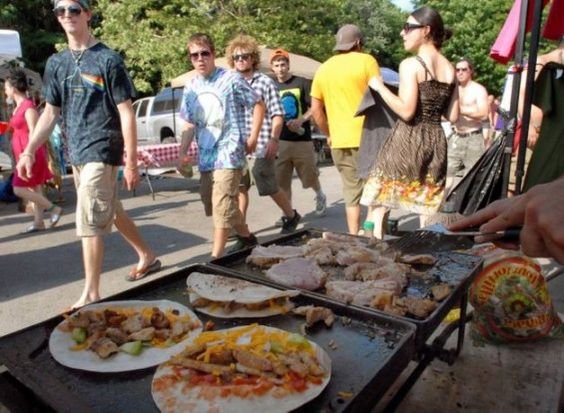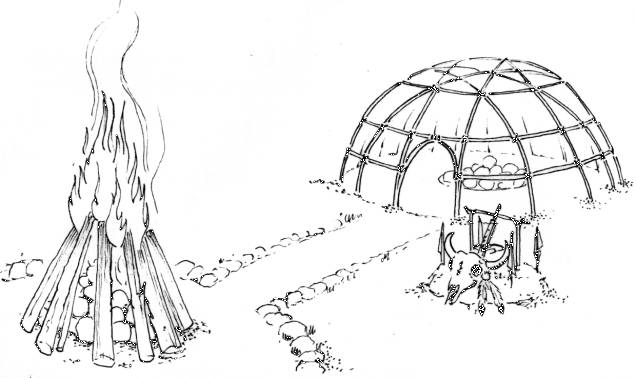My Life as a Cultural Appropriator - Part I
This will be the story of how I became a cultural appropriator as a youth. It might have saved my life. As I tell it, we’ll briefly touch on many a topic one of the principal being what I call “The Sun Dance Movement” in the United States. My intention is not to make an argument for or against cultural appropriation. On longer time scales, it may be an unavoidable sociological phenomenon.
Let’s set up a foundation first.
What is cultural appropriation?
This phrase might be on your radar as there has been some relatively recent controversies concerning pop singers like Katy Perry, where public apologies eventually came into play. The simple definition at Wikipedia is “the adoption or use of the elements of one culture by members of another culture,” but a Google search of the expression quickly reveals definitions that frame it in a critical light.

Breaking News: Egyptian General Strike Against Katy Perry! Attribution: Katy Perry - The Prismatic (Newark) 06 by Sleepyibis is licensed under CC BY 2.0
The article “What Is Cultural Appropriation and Why Is It Wrong?” quotes law professor Susan Scafidi and cites a definition of cultural appropriation where it is a harmful force:
“Taking intellectual property, traditional knowledge, cultural expressions, or artifacts from someone else's culture without permission. This can include unauthorized use of another culture's dance, dress, music, language, folklore, cuisine, traditional medicine, religious symbols, etc.
It's most likely to be harmful when the source community is a minority group that has been oppressed or exploited in other ways or when the object of appropriation is particularly sensitive, e.g. sacred objects.”
This definition of cultural appropriation is not without its detractors. One can see that many definitions of cultural appropriation in the Urban Dictionary mock it as nothing more than a nonsensical formulation of the Social Justice oriented left. On this video, Jordan Peterson similarly poo-poos the idea of cultural appropriation as a negative tendency by briefly making the case that it occurs because an aspect of one culture can be attractive to another that lacks an expression for a powerful psychological archetype. He cites the aggression of hip-hop being attractive to young, white, suburban men as an example.
However your opinions may fall on this subject, I think most would agree that borrowing the religious symbols, beliefs, and regalia of another culture is treading on sensitive territory. In the case of North American Whites participating in the spiritual frameworks of the First Cultures, it is doubly complex because there is a strong argument that a sort of cultural genocide, clear and explicit during bygone epochs, is ongoing to this very day.
How I Became a Cultural Appropriator
In high school, I was living the classic misspent youth. My teachers felt it was just better to let me sleep through class, and I was an absolute nightmare for my poor parents. I felt that special mixture of arrogance, self-consciousness, and anguish that only the teenager can truly embody. I was the turd in the punchbowl.
I had manifested, as an outward expression of my disdain for all things acceptable, the nastiest, most ill-conceived dreadlocks possible. Think less Bob Marley and more gluing 4 or 5 bird nests to your head. My spasm of rebellion was quickly running out of momentum, and a turning point came when I asked my mother to try to brush my dreads out.

Turn this upside down, put it on someone’s head, and you can imagine my dreadlocks! Attribution: Nature Neighbors … and other by Abbot, Banta, Higley, and Schneider is licensed under flickr commons
We started by putting conditioner in my hair. When that did not even put a dent in the bird nest, we went through a series of substances until finally we had effectively soaked my hair in Crisco vegetable shortening. Four to six hours later, half my hair was sitting on the floor mixed into white, oily clumps of fat, but I was dreadlock-free.
The following days, I was empty. I had no direction. In my heart, there was nothing but some distant echo of the rebellion I had felt and a profound hunger.
At that time, many of my friends were gone for extended periods traipsing about the country as they followed the Grateful Dead. The Dead with famous frontman Jerry Garcia toured every year from 1969 to 1995, the year of Jerry’s death, except for a unique 1975 pause. An entire sub-culture had grown up around the band. Many a person would work a throwaway job 9-months a year to tour with the Dead for the other three. Some made a career out of traveling town to town all year long.
A Long, Strange Mise-en-Scène
I won’t go deeply into this most particular movement. The documentary Tie-Died: Rock ‘n Roll’s Most Deadicated Fans paints a vivid portrait of the tour scene as it was in the Eighties and Nineties (watch it here on YouTube) and Long Strange Trip, a recently released documentary, tracks the band’s musical evolution.
The parking lot outside a Grateful Dead concert was both a party and an open-air bazaar. It was an endless sea of people, cars, and tents punctuated by the occasional DIY, home-on-wheels schoolbus. People would be laughing, singing, dancing, and drumming from hours before the concert would start until the police would finally make everyone clear out afterwards. Self-made merchants would be selling anything: grilled cheese sandwiches, ganja goo balls, T-shirts, home-made jewelry, veggie burritos, and copious amounts of less legal items. Fortunes were made or lost in hours. It was the strangest mash-up of hippy idealism and pure, unabashed capitalism that you can imagine.

The food could be SSSOOOOOOO yummy!!! Attribution: dead-commerce by Nick Sorrentino is licensed under CC BY 3.0
This was the backdrop of our lives. The experimental spirit of Sixties Counter-Culture had opened our minds to novel, spiritual ideals and mysticism. We had a romantic conception of what the interaction between the realm of nature and the world of human beings could be. Nature was something that was, of course, physically alive but also spiritually alive. It could speak to you.
For us, churches were stale, drab constructions where we cried out to cold, distant beings that never answered. An iconic part of many First Culture spiritual practices is the sweat lodge. It is a dome-shaped structure, made from long, flexible Willow saplings, and covered in blankets. For us, we saw it as being able to build your own church in hours and commune with the constituent principalities embodied in the elements of the earth and the sky. These were the beings that seemed immediate. We wanted to be noticed by them.
A friend took me to a sweat lodge. There I was: empty, hungry, and feeling profoundly alone. The hot rocks were brought in on a pitchfork and gingerly laid into a pit in the middle of the lodge. The door closed, darkness fell, thick steam filled the cozy space, and singing accompanied by a steady, simple rhythm began. I felt something for the first time in a long, long time...

This is a sweat lodge before it is covered with blankets that hold in the steam. Though this was all years ago, the taboo of taking photos of a ceremonial grounds remains with me, so I was happy to find a drawing. Attribution: Inipi002 by Wikipedia is licensed under CC BY 3.0
In Part II, we will talk about some of the history of White participation in First People’s spiritual practices, the evolution of what I call “The Sun Dance Movement,” and finish my story where I did eventually move away from those practices and why. I hope to see you there!
Great write up!
Thank you for sharing :)
Thanks for reading!
It may take me a couple of days to get part II out. This weekend certainly...
Best wishes!
If it's worth doing it's worth doing well :)